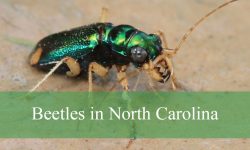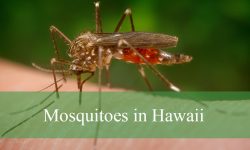When most people think of penguins, the first image that likely comes to mind is a black-and-white bird waddling across the frozen landscapes of Antarctica. While this popular perception isn’t entirely wrong, it’s far from complete. Wild penguins inhabit a variety of environments that extend well beyond the icy poles. In fact, many species live in regions that never see snow, let alone freezing temperatures. Understanding where wild penguins live is not only fascinating but also important for conservation efforts and our appreciation of biodiversity.
Penguins are remarkably adaptable birds, and their ability to thrive in diverse habitats is one of the most compelling aspects of their biology. From volcanic islands and temperate coasts to frigid tundras and subtropical shores, penguins have made their homes in some of the world’s most unexpected places. In this detailed exploration, you’ll learn where wild penguins live, why they live there, and how their environments shape their behavior and survival.
The Geographic Range of Penguins

Penguins are exclusively native to the Southern Hemisphere. Unlike many other bird species, you won’t find wild penguins flying across the globe or nesting in northern forests. Instead, their natural range spans from the frozen coastlines of Antarctica to the lush islands near the equator. This southern distribution is linked to their evolutionary history and their dependence on cold ocean currents, which bring abundant marine food sources.
Some species are confined to narrow habitats, while others inhabit wide ranges across multiple countries. The cold-dwelling emperor and Adélie penguins are strictly Antarctic residents, but many others reside in regions far removed from the ice. South America, Africa, Australia, and various Pacific islands all host wild penguin populations. Even the Galápagos Islands, located on the equator, are home to their own unique species.
These varied homes are often influenced by oceanic conditions more than climate on land. Penguins rely heavily on cold, nutrient-rich waters for food, which explains why many species can thrive in warm terrestrial environments so long as the surrounding ocean provides enough sustenance. This is particularly evident in areas influenced by cold currents like the Humboldt and Benguela systems.
Penguins of the Antarctic Region
The most iconic penguins are undoubtedly those that live in Antarctica. These include the emperor penguin, the largest of all penguin species, and the Adélie penguin, known for its large colonies and circular eye rings. The icy continent provides an extreme environment where survival requires exceptional adaptations. Thick layers of blubber, tightly packed feathers, and huddling behaviors help these birds endure the brutal cold.
These Antarctic penguins breed during the harshest months of the year. The emperor penguin famously incubates its single egg on the male’s feet through the heart of winter while temperatures plunge below -60°C. Meanwhile, Adélie penguins construct pebble nests during the summer and forage beneath the sea ice for krill and small fish. Their entire life cycle is closely tied to the dynamics of sea ice and seasonal shifts in temperature.
Surprisingly, these birds rarely venture far inland. They remain close to the coastline or ice shelves, which provide access to the ocean. Most of their daily lives are spent swimming and diving in frigid waters, and they return to land primarily for breeding and molting. As climate change threatens the extent of sea ice, the habitat of these penguins becomes increasingly fragile, making them a focal point for scientific research and conservation efforts.
Subantarctic Islands and Their Penguin Colonies
Just north of the Antarctic mainland lies a ring of subantarctic islands. These isolated, windswept landmasses provide important breeding grounds for several penguin species. King penguins, royal penguins, and gentoo penguins are common inhabitants of these territories. The islands offer fewer temperature extremes while still benefiting from the cold southern oceans.
One of the most remarkable features of these island habitats is the sheer density of penguin colonies. Some rookeries host tens of thousands of individuals packed into small coastal areas. The rugged terrain, steep cliffs, and grassy slopes provide varied nesting opportunities, while nearby waters teem with squid, fish, and krill.
Despite their remoteness, these islands face human pressures such as fishing, tourism, and invasive species. Rats and cats introduced by early sailors have decimated native bird populations in some areas, but ongoing conservation work aims to restore ecological balance. These regions also serve as vital field sites for studying the effects of warming ocean temperatures and shifts in marine ecosystems on penguin populations.
South American Shores and the Patagonian Coast
Heading further north, several penguin species inhabit the coasts of South America, particularly along Chile and Argentina. The Magellanic penguin is perhaps the most familiar face in these areas. These birds nest in burrows or under bushes along temperate beaches, avoiding the need to endure snow or ice. While their appearance is similar to their polar cousins, their way of life differs considerably.
The South American coasts benefit from the Humboldt Current, a cold ocean stream that brings nutrient-rich water to the surface. This supports abundant fish populations and enables penguins to feed effectively. During the breeding season, Magellanic penguins return to the same nesting sites year after year, forming large colonies that stretch along rocky shores and grassy dunes.
These penguins still face natural challenges, including predators like sea lions and skuas. However, human threats—such as oil spills, fishing net entanglement, and coastal development—pose increasing dangers. Conservation groups monitor these populations closely and work to protect breeding grounds through designated wildlife reserves and protected marine areas.
Penguins in Africa’s Southern Waters
One of the most surprising facts about penguins is that they also live in Africa. The African penguin, sometimes known as the jackass penguin for its braying call, is native to the southwestern coast of Africa. These birds inhabit islands and mainland beaches along Namibia and South Africa.
Unlike their Antarctic relatives, African penguins contend with intense heat and strong sunlight. To cope with the warm climate, they have adapted with bare patches of skin above the eyes to help regulate body temperature. They nest in burrows or shaded areas to protect themselves and their chicks from overheating.
African penguins are highly dependent on sardines and anchovies, which are carried by the Benguela Current. Unfortunately, overfishing and climate change have reduced fish stocks, leading to steep declines in penguin numbers over recent decades. Oil spills and habitat destruction have further worsened the situation, placing this species on the endangered list. Nonetheless, rehabilitation centers and breeding programs in places like Cape Town play a crucial role in their survival.
The Unexpected Penguins of the Galápagos
Possibly the most surprising penguin habitat in the world lies at the equator. The Galápagos penguin is the only penguin species that naturally lives in the Northern Hemisphere. Found only on the Galápagos Islands, these birds have uniquely adapted to the tropical climate by relying heavily on the cool waters of the Humboldt and Cromwell currents.
Despite the warm weather on land, the surrounding ocean remains cold enough to support rich marine life. The Galápagos penguin is small in size, which helps it regulate heat more efficiently. These birds nest in rocky crevices and shaded lava formations to avoid direct sunlight. Their survival strategy includes nesting during periods when food is abundant and adjusting behavior when ocean conditions change.
Because of their extremely limited range and vulnerability to climate events like El Niño, Galápagos penguins are considered endangered. Conservation efforts on the islands focus on maintaining clean habitats, monitoring populations, and minimizing human interference in their breeding sites. Tourists visiting the Galápagos often marvel at the sight of penguins swimming near tropical beaches, an image that completely defies the classic snow-and-ice stereotype.
Penguins of Australia and New Zealand
Australia and New Zealand are also home to wild penguin populations. The little penguin, also called the fairy penguin, is the smallest penguin species and is commonly found along the southern coasts of Australia and the coastlines of New Zealand. These birds live in temperate regions and return to the same nesting burrows year after year.
These penguins are nocturnal on land, coming ashore under cover of darkness to avoid predators. Their small size allows them to maneuver easily through narrow passages and tunnels as they head inland to their nests. Unlike some of their larger relatives, little penguins live closer to human settlements and have adapted surprisingly well to suburban environments in some locations.
In New Zealand, species like the yellow-eyed penguin and Fiordland crested penguin live in more secluded, forested regions and rocky shores. These birds are highly sensitive to disturbance and have suffered from habitat loss due to deforestation and introduced predators such as dogs, cats, and stoats. Conservationists have made significant efforts to restore breeding sites and control invasive species to give these rare penguins a chance to recover.
Why Penguins Don’t Live in the Northern Hemisphere
The absence of penguins in the Northern Hemisphere is not because they couldn’t survive there biologically, but because they never evolved in those regions. Penguins are thought to have originated near the southern continents and have remained there due to their reliance on specific ocean currents and ecological conditions.
Additionally, the natural evolution of penguins was shaped by isolation. With limited ability to fly and no land bridges to connect them to northern territories, penguins never naturally expanded into the Arctic or northern oceans. This has helped them avoid direct competition with similar birds like puffins, which fill similar ecological roles in the Northern Hemisphere.
Over time, their evolutionary path cemented their place in the Southern Hemisphere’s marine ecosystems. Penguins are specialized divers and swimmers, capable of navigating vast distances in the ocean but limited in their ability to colonize new continents without assistance. This geographic limitation has preserved their unique distribution pattern, making it all the more remarkable.
Climate Change and the Future of Penguin Habitats
As global temperatures rise and ocean patterns shift, penguin habitats around the world are under increasing threat. Changes in sea temperature can disrupt food availability, alter breeding cycles, and even melt critical nesting areas. Antarctic species may struggle with retreating ice shelves, while equatorial penguins suffer from unpredictable ocean currents.
Human-induced threats such as oil spills, pollution, overfishing, and tourism add to these challenges. Some penguin species have experienced dramatic population declines, pushing them toward endangered or vulnerable status. Conservation groups and scientists continue to monitor these trends and develop strategies to safeguard wild penguin populations.
Protecting penguins requires international cooperation, strict regulation of fisheries, habitat restoration, and public awareness. As one of the most beloved bird groups in the world, penguins serve as symbols of environmental resilience and vulnerability alike. Their fate is closely tied to the health of the oceans, and preserving their habitats benefits countless other marine species.
FAQ About Where Wild Penguins Live
Do penguins only live in cold places?
Not all penguins live in cold places. While some species, like the emperor and Adélie penguins, live in Antarctica, others inhabit warm regions like Africa and the Galápagos Islands.
Where can I see wild penguins?
You can observe wild penguins in various countries including Argentina, Chile, South Africa, Australia, New Zealand, and the Galápagos Islands.
Why aren’t penguins found in the Northern Hemisphere?
Penguins evolved in the Southern Hemisphere and have remained there due to ecological and geographic limitations, particularly their inability to fly long distances.
Do penguins live on every continent?
No, penguins are native only to the Southern Hemisphere and are not found in the Arctic, North America, Europe, or Asia in the wild.
Are wild penguins endangered?
Some wild penguin species are endangered due to threats like climate change, overfishing, habitat destruction, and pollution. Conservation efforts are underway worldwide.






